Jeez---I'm gonna go right upstairs and pour that stuff out!!!
You are using an out of date browser. It may not display this or other websites correctly.
You should upgrade or use an alternative browser.
You should upgrade or use an alternative browser.
Brian Builds the Kerzel Hit and Miss I.C.
- Thread starter Brian Rupnow
- Start date

Help Support Home Model Engine Machinist Forum:
This site may earn a commission from merchant affiliate
links, including eBay, Amazon, and others.
tel
Well-Known Member
- Joined
- Feb 8, 2008
- Messages
- 3,293
- Reaction score
- 45
I make it 1.12849 US fl/oz or 1.17458 proper ones.
Somehow that doesn't sound right, with a US gallon being small than ours ?????
Canola oil? I use it all the time for cooking - have done for years, and nothing has fallen off, or grown on, me yet.
Somehow that doesn't sound right, with a US gallon being small than ours ?????
Canola oil? I use it all the time for cooking - have done for years, and nothing has fallen off, or grown on, me yet.
Apparently it all has to do with the volume of 8 pounds of wine
http://en.wikipedia.org/wiki/Fluid_ounce
You can't make this stuff up.
http://en.wikipedia.org/wiki/Fluid_ounce
You can't make this stuff up.
tel said:Canola oil? I use it all the time for cooking - have done for years, and nothing has fallen off, or grown on, me yet.
So you say. Rof} Rof} Rof}
BC1
Jim
Rapeseed oil is used for industrial lubricants - it is leathal and there have been deaths from using it for cooking.
Canola oil is a genetically modified version of rapeseed oil and apart from a large body of alarmist BS is considered safe.
If you Google a subject - always Google both sides of the arguement.
Google "canola oil dangerous" - 8400 hits
Googla "canola oil safe" - 60800 hits.
I'm not taking a side here - but there are sides.
Aren't we a little off topic here guys ?
Ken
Canola oil is a genetically modified version of rapeseed oil and apart from a large body of alarmist BS is considered safe.
If you Google a subject - always Google both sides of the arguement.
Google "canola oil dangerous" - 8400 hits
Googla "canola oil safe" - 60800 hits.
I'm not taking a side here - but there are sides.
Aren't we a little off topic here guys ?
Ken
- Joined
- Dec 28, 2008
- Messages
- 1,731
- Reaction score
- 9
Ken I said:Aren't we a little off topic here guys ?
Ken
I don't think so. But, If this thread went off topic than its my fault. I started the ball rolling by answering back to Brian.
Quoting Brian: What in Hell is a Canola???
Ken, with all do respect, its Brian's thread so if he wants to talk about cooking oil, or whatever suits his fancy, its OK by me.
-MB

$25.34
$34.99
Peachtree Woodworking Supply Bowl Sander Tool Kit w/Dual Bearing Head & Hardwood Handle, 42 Pieces Wood Sander Set, 2 Hook & Loop Sanding Disc Sandpaper Assortment, 1/4 Mandrel Bowl Sander
Peachtree Woodworking Supply Inc

$599.00
$649.00
FoxAlien Masuter Pro CNC Router Machine, Upgraded 3-Axis Engraving All-Metal Milling Machine for Wood Acrylic MDF Nylon Carving Cutting
FoxAlien Official

$2.08
$19.95
Sheds & Garages: Building Ideas and Plans for Every Shape of Storage Structure
goodwill_ind_of_mid_tn
This thread has gone on so long that if we drift off topic once in a while, I don't think anybody is going to get shot!!! I really didn't know what Canola was, although I have heard of Rapeseed oil. Not being a farmer type, I only have vague ideas of agricultural stuff. When I was a kid growing up in the north we always had a home garden, but it was pretty conventional "pioneer" fare. Carrots, onions, radishes, potatoes, some corn, a few pumpkins , and cucumbers. What the rabbits and deer didn't eat, we did. ;D ;D The big commercial growers in southern Ontario and in western Canada grow a lot of things that were never found in a home garden so I'm not familiar with it.---Brian
So I think we all agree, the fuel tank holds something in the neighbourhood of 1 1/8 to1 1/4 ounces.---not too bad for a 3 1/2 hour run. I have been unable to find a tension spring in the size and strength that I want for the counterweight springs, but I used the search function and found an excellent article on spring winding by Deanofid. I have to go across town this afternoon to return a grandchild, so will stop at the hobby store and pick up a small roll of 0.010 music wire (or a guitar string of the correct diameter) and try my hand at spring winding. I know how it gets done in theory, but have never wound a spring myself, so it may be an opportunity to learn a new skill----Yahoo!!!---I like learning new thngs.
According to my laser tachometer its averaging 115 RPM. Does that sound about right for a hit and miss engine?
I never did trust that laser tach!!!!---Thanks Pat---
Just playing around with the "Macro" settings on my camera.---This is a good shot of the push rod and guide, and the top end of the "Kerzel lever" that moves in and holds the pushrod from seating, thus keeping the exhaust valve open. In the original plans this lever had a long extended end on it that didn't serve any practical purpose, so I removed it. It also shows the locknut and sleeve I added to keep the pushrod from uncrewing itself out of adjustment.
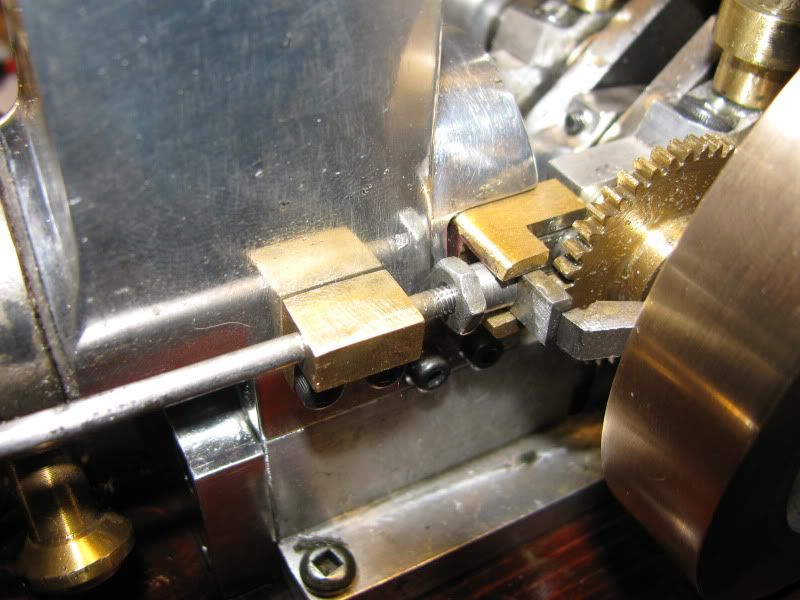

I thought I would try something new----Spring winding. I have never done this before, but since I couldn't find the proper light springs for the governor weights anywhere to buy, I decided to make them. Deanofid has an excellent tutorial on the HMEM forum, so I just followed along. Kerzel calls for a spring made of 0.010" diameter music wire, wound on a 0.093" mandrel. According to Deanofid, for springs made of music wire less than 0.025" diameter you don't need a special jig. The mandrel is clamped in the lathe chuck, the free end of the mandrel is positioned in the jaws of a tailstock mounted chuck which is NOT TIGHTENED --its there simply to keep the mandrel from bending. One end of the music wire (I used a 0.010" guitar string) is clamped under one of the chuck jaws, and while holding tension on the wire with a pair of pliers the lathe chuck is TURNED BY HAND--NOT POWERED. By keeping the wire tight, with a slight bias towards the chuck (to keep the loops forming tightly against each other with no gaps) it is very easy to do. It takes an amazingly long wire to make a relatively short spring. To get the amount of spring in the picture, I used up almost all of a full length guitar string.
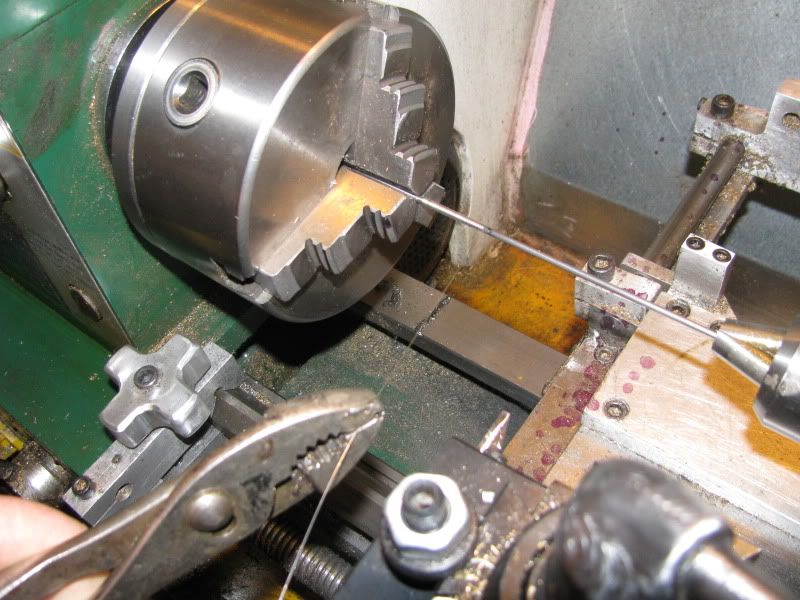

Here is a close up shot of the wire on the mandrel---one end clamped under the chuck jaw, the other still being held in tension by the pliers in my other hand.
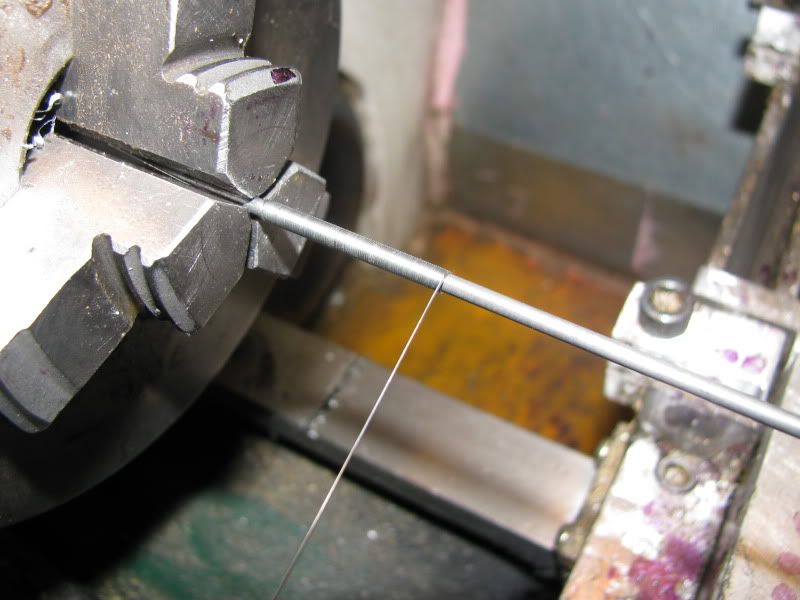

And here is the resulting spring. When the spring has been wound as long as you need it, you have to turn the chuck backwards BY HAND enough to release a bit of the tension in the wound spring, and release the end which was in the pliers very carefully (I did it with my back turned and my eyes closed---wasn't sure just what was going to happen!!!) Interestingly enough, the mandrel was 0.093" dia. and the spring was 0.010, which would give an outer diameter of 0.113" on the spring. However, since it relaxes a bit when you let go of the end, the finished o.d. ends up being 0.139" dia. I still have to heat treat the spring and then form the loops on the end of it, but will post more about how that went tomorrow.
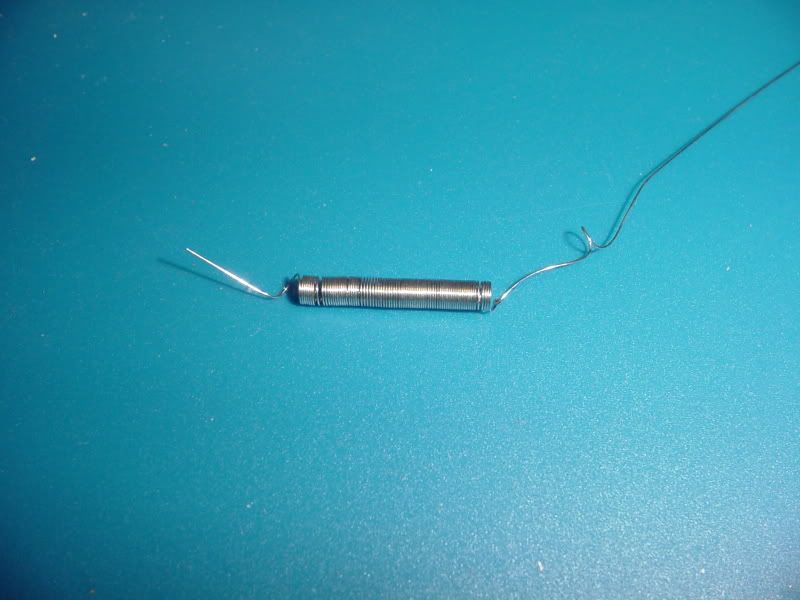

So---Here we are finished. The springs were cooked in my wifes kitchen oven at 450 degrees for 1 hour wrapped in steel wool and aluminum foil as per Deanofids tutorial (while my wife was out shopping). The peices of brass were clamped together in my mill vice and a hole very slightly smaller than the o.d. of the springs was drilled thru them lengthwise. The springs were trimmed to the correct length, held between the two peices of brass in the mill vice, and the end loops were pried up with my jacknife. If this works, it will be the easiest NEW technical thing I have ever learned. Now to mount them on the Kerzel engine and see what happens!!!
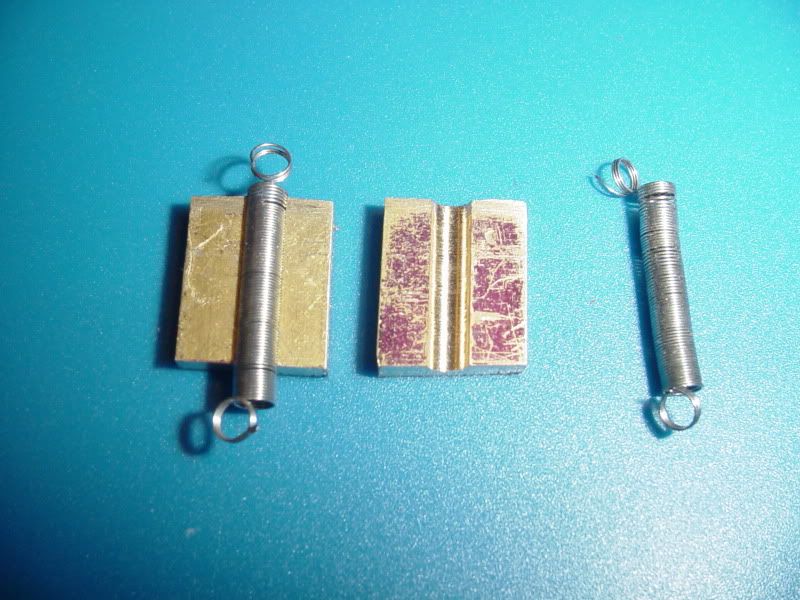

My new governor springs are installed, after much trying at different lengths. The governor is working sooooo freely now, and I've gone from "How do I slow this thing down" to "How the heck do I speed this thing up???" Since this video was taken, I now have the engine firing once, then going into the miss cycle, then firing once again. this is where I ultimately want to be, but I have to speed it up a bit.
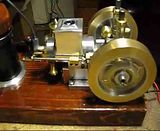

And here we are, running in hit and miss mode, firing once between each miss cycle. This is exactly what I have been aiming for. When I get the roller bearings installed on the crankshaft, it will cut down a bit more friction, and perhaps "miss" for a longer time between 'hits", but I think I am getting close to the line between torque created by a 3/4" piston and the inertial "break out" point of the flywheels.
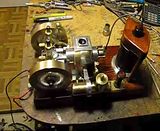

Regarding RPM, here's a short video of one of my small ones, 3/4 bore. It tacs about 500 RPM. I have a strobe tack. I think it's about right cuz you can hear the cam click'n about 4 or 5 times a second. Notice too the cam clicks about 5 times per hit so it coast 10 then hits once. Its about like yours but not nearly so pretty. My cam and gov though are a lot noisier. I wish it didn't rattle so much.
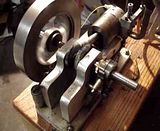

Similar threads
- Replies
- 413
- Views
- 67K
- Replies
- 356
- Views
- 67K








































